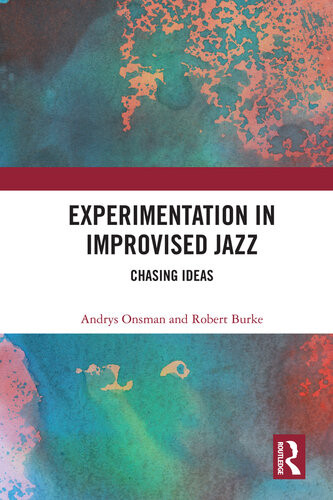

Most ebook files are in PDF format, so you can easily read them using various software such as Foxit Reader or directly on the Google Chrome browser.
Some ebook files are released by publishers in other formats such as .awz, .mobi, .epub, .fb2, etc. You may need to install specific software to read these formats on mobile/PC, such as Calibre.
Please read the tutorial at this link: https://ebookbell.com/faq
We offer FREE conversion to the popular formats you request; however, this may take some time. Therefore, right after payment, please email us, and we will try to provide the service as quickly as possible.
For some exceptional file formats or broken links (if any), please refrain from opening any disputes. Instead, email us first, and we will try to assist within a maximum of 6 hours.
EbookBell Team

4.3
48 reviewsExperimentation in Improvised Jazz: Chasing Ideas challenges the notion that in the twenty-first century, jazz can be restrained by a singular, static definition. The worldwide trend for jazz to be marginalized by the mainstream music industry, as well as conservatoriums and schools of music, runs the risk of stifling the innovative and challenging aspects of its creativity. The authors argue that to remain relevant, jazz needs to be dynamic, proactively experimental, and consciously facilitate new ideas to be made accessible to an audience broader than the innovators themselves. Experimentation in Improvised Jazz explores key elements of experimental jazz music in order to discern ways in which the genre is developing.
The book begins with an overview of where, when and how new ideas in free and improvised jazz have been created and added to the canon, developing the genre beyond its initial roots. It moves on to consider how and why musicians create free and improvised jazz; the decisions they make while playing. What are they responding to? What are they depending on? What are they thinking? The authors analyse and synthesise the creation of free jazz by correlating the latest research to the reflections provided by some of the world’s greatest jazz innovators for this project. Finally, the book examines how we respond to free and improvised jazz: artistically, critically and personally. Free jazz is, the book argues, an environment that develops through experimentation with new ideas.